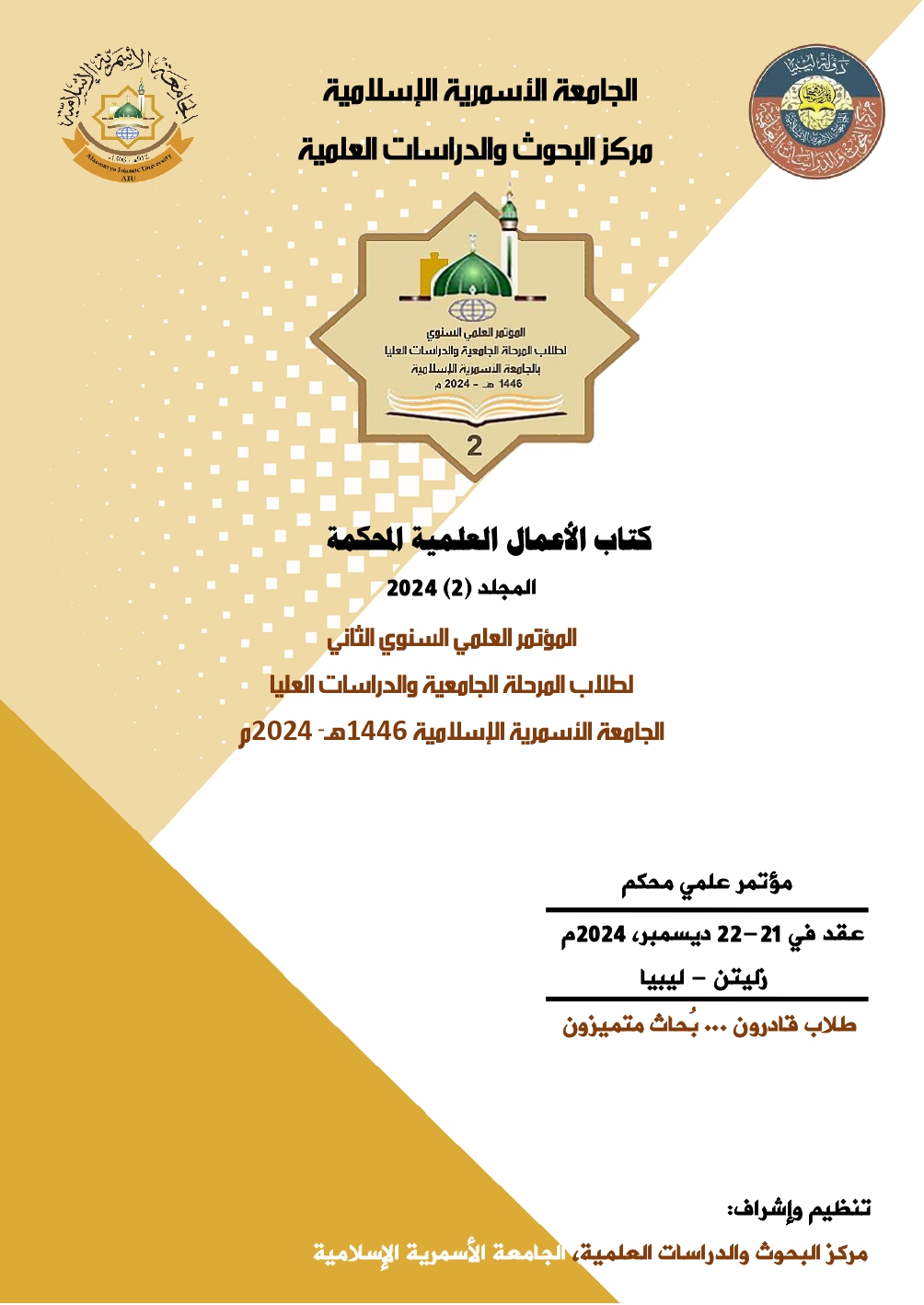An Analytical Study of Translating some of Different Oath Formats in The Glorious Qur’an in The Parts of 28, 29 and 30.
Keywords:
Holy Qur’an, Oath, Translation, Source text, Target textAbstract
The research evaluates variations in accuracy and interpretation across three different translations of the Holy Qur’an: Yusuf Ali’s (1934), Mohammed Marmaduke’s (1948), and Al Muntada alIslami Trust’s (2010). Focusing on some verses containing oaths in parts (28, 29, and 30), the study meticulously examines the type of oath used and its significance. Through subjective experiences, it aims to understand the specific meanings and behaviors conveyed in these verses, shedding light on differences in oath styles. The recommendation is to expand the study to encompass a broader examination of oath types throughout various sections of the Qur’an, extending beyond specific Surahs or hadiths. By including additional sources and texts, scholars can deepen their understanding of oath concepts within Islamic scripture. This research serves as a valuable resource, inspiring further exploration into the multifaceted nature of oaths in religious texts. The results cover parts 28, 29, and 30, comprising 57 Surahs, with 20 of them containing oath verses primarily aimed at strengthening faith. The researchers employed an inductive method to reveal the secrets of the Qur’an through the analysis of oath-related content and its translation in these parts.
Downloads
References
Abbasi, G., Saleh Zadeh, S., Janfaza, E., Assemi, A., & Dehghan, S. S. (2012). Language, Translation, and Culture. 2012 International Conference on Language, Medias and Culture, 33, 83-87, IACSIT Press.
Al Muntada al Islami (2010). Saheeh International Qur'an Translation (Al Muntada al Islami). Al-Muntada Al-Islami Press. Available at: [https://www.amazon.com/Saheeh-International-Translation-Muntada-Islami/]
Ali, A. Y. (1934). The Holy Quran translation and commentary. Lahore, India. Available at: [https://quranyusufali.com/].
Al-Zarakshi, Abu Abdullah Badr Al-din Muhammad Bin Bahadur (1410 AH). Al-Burhan fi Ulum Al-Quran. Dar Al-maarifa, Beriut, Lebanon.
Ghazala, H. (1995). Translation as Problem and Solutions. Dar El-Ilm Lilmalayin, Beirut, Lebanon.
Hassan, M. (2023). Innovations in Research Methodologies: Transforming the Landscape of Academic Inquiry. Available at: [https://www.linkedin.com/pulse/innovations-research-methodologies-transforming-landscape-hassan/].
Ibn al-Qayyim, Imam Abu Abdullah Muhammad bin Abi Baker Bin Ayoub Ibn Qyyim Al-Jawziyyah (1429 AH). Al-Tibyan fi Aqsam Al-Quran, Dar Alam Al-fawayid, Lahore
Marmaduke Pickthal, M. (1948). The Meaning of the Glorious Qur'an. George Allen and Unwin Ltd. Available at: [https://archive.org/details/in.ernet.dli.2015.217757].
Nzimande, E. N. (2017). The translator as a cultural mediator in the translation of Mthembu’s UMamazane into English. Mini dissertation in MA, University of Pretoria, South Africa.
Palmer, C. and Bolderston, A. (2006). A Brief Introduction to Qualitative Research. The Canadian Journal of Medical Radiation Technology, spring, 16-19.
Sreekumar, D. (2022). Differences between Qualitative and Quantitative Research. Available at: [https://paperpal.com/blog/press-release/].
Suyūti, Abd al-rahman bin Abi bakr Jalal al-Din (1354 AH). Al-Itqan fi Ulum Al-Quran. The Egyptian general book Authority.
Downloads
Published
Conference Proceedings Volume
Section
License

This work is licensed under a Creative Commons Attribution-NonCommercial-NoDerivatives 4.0 International License.





